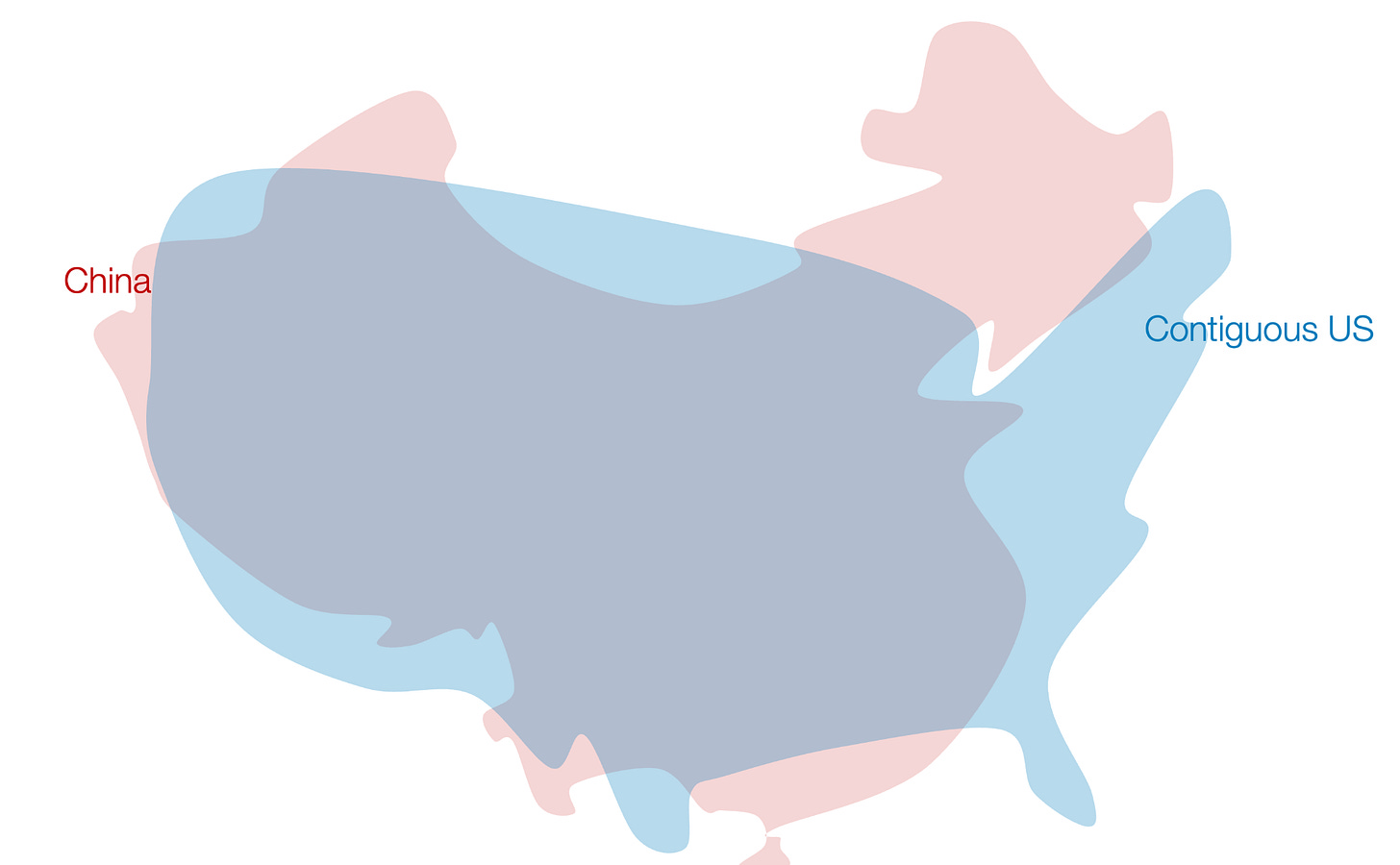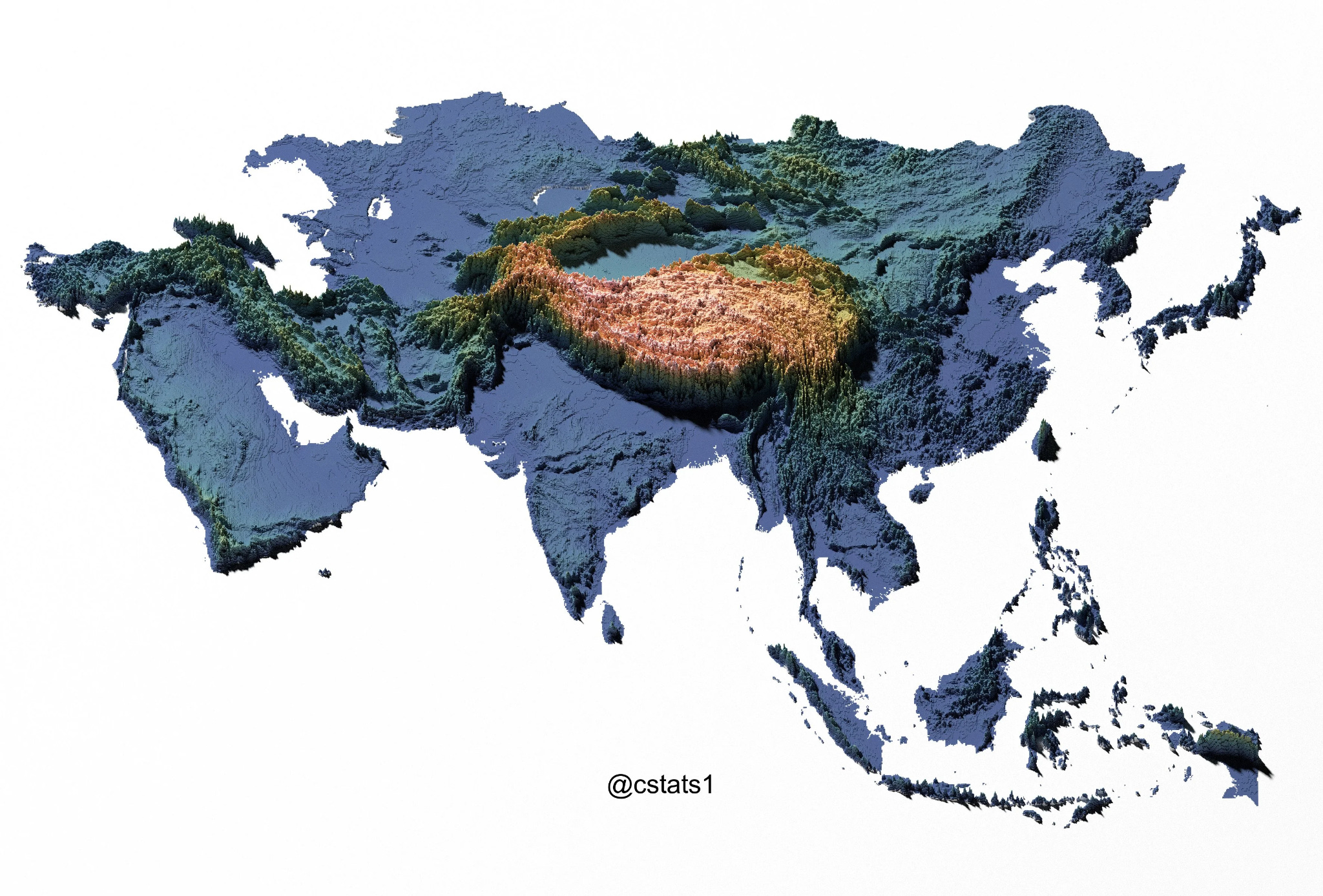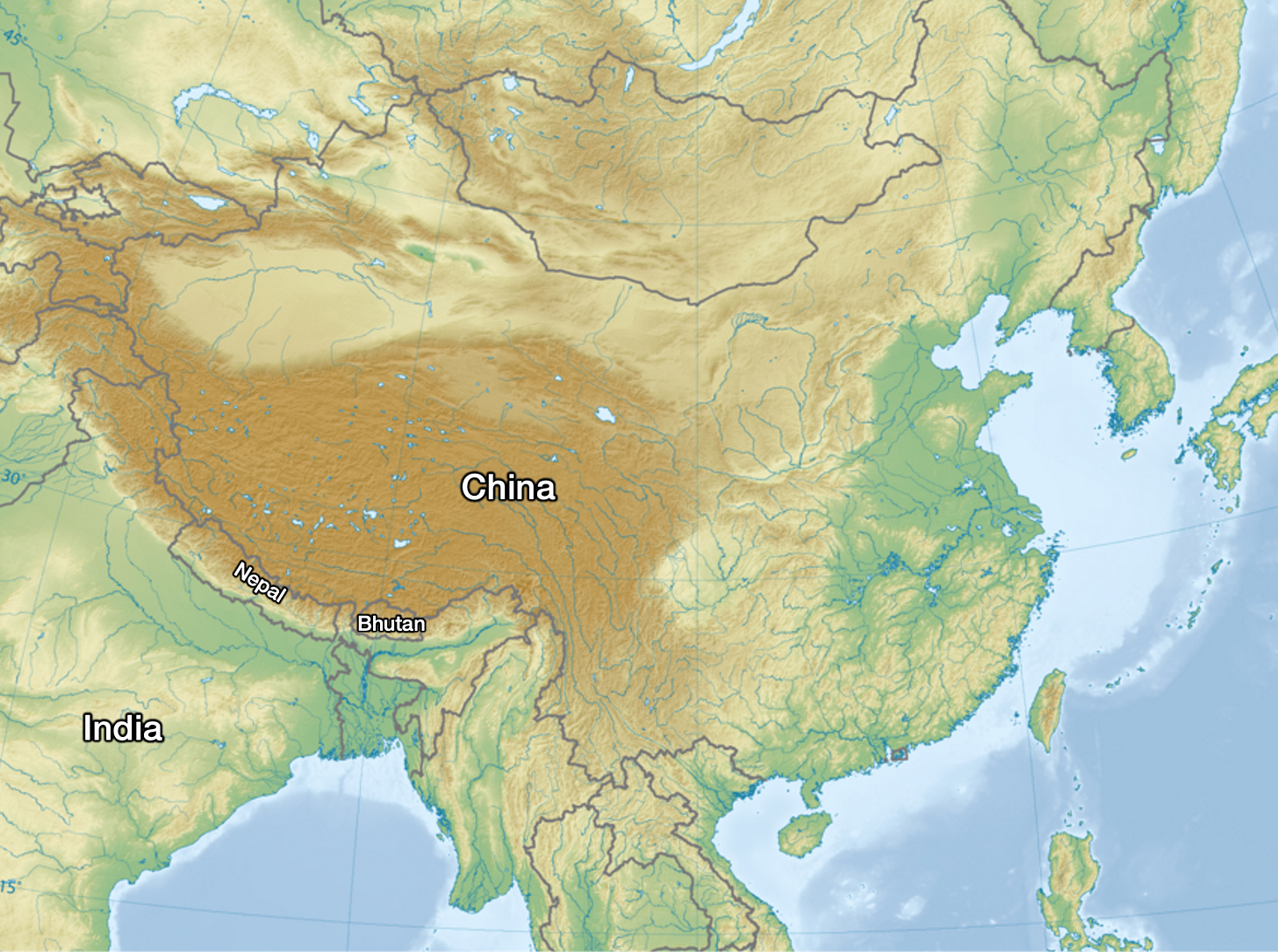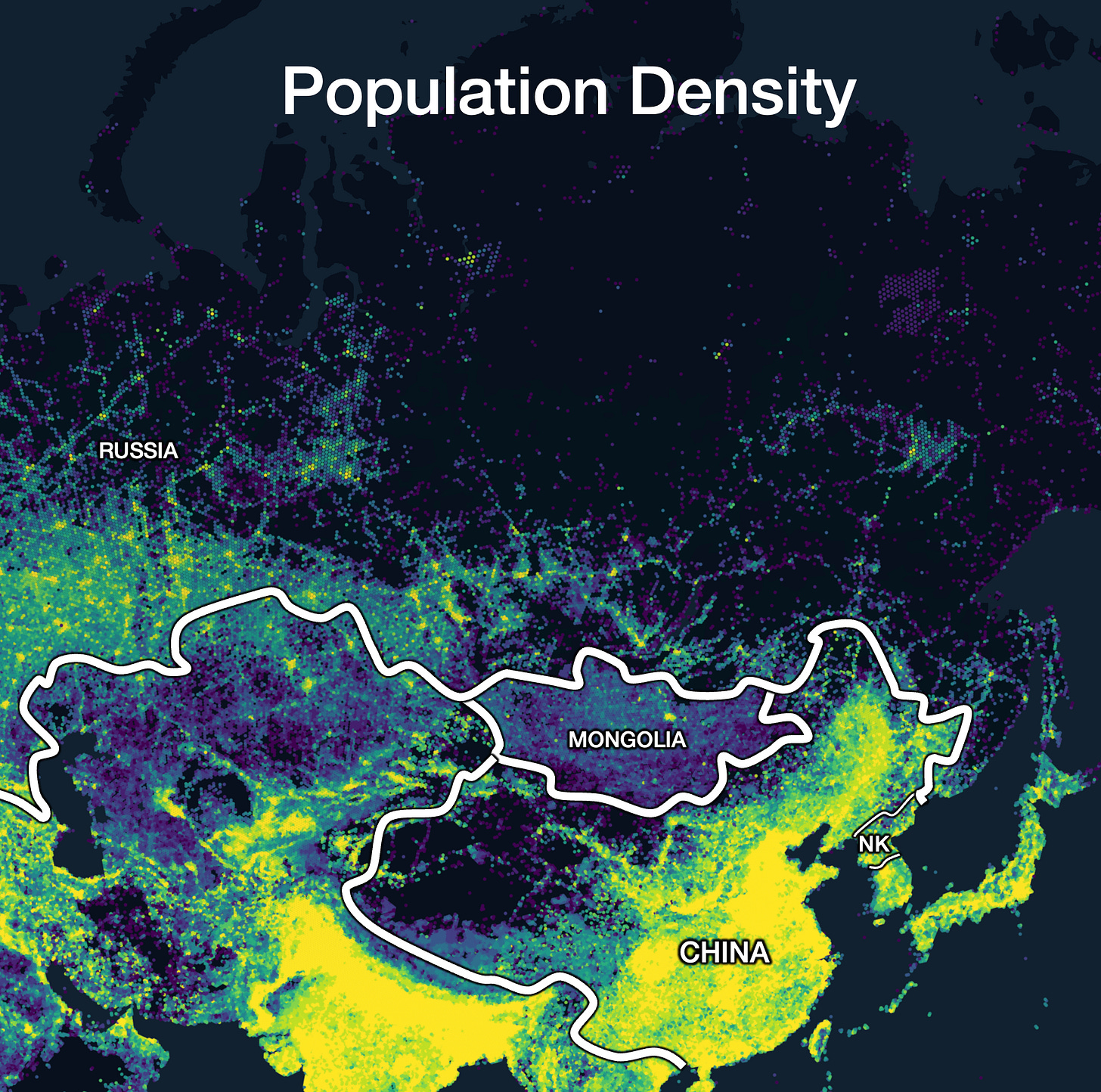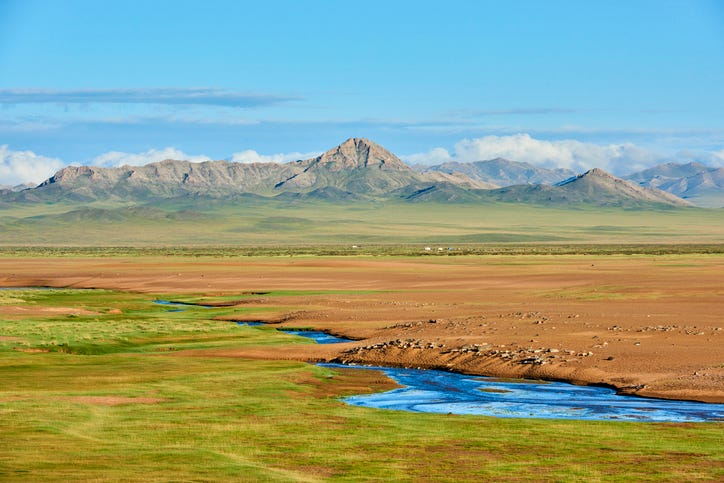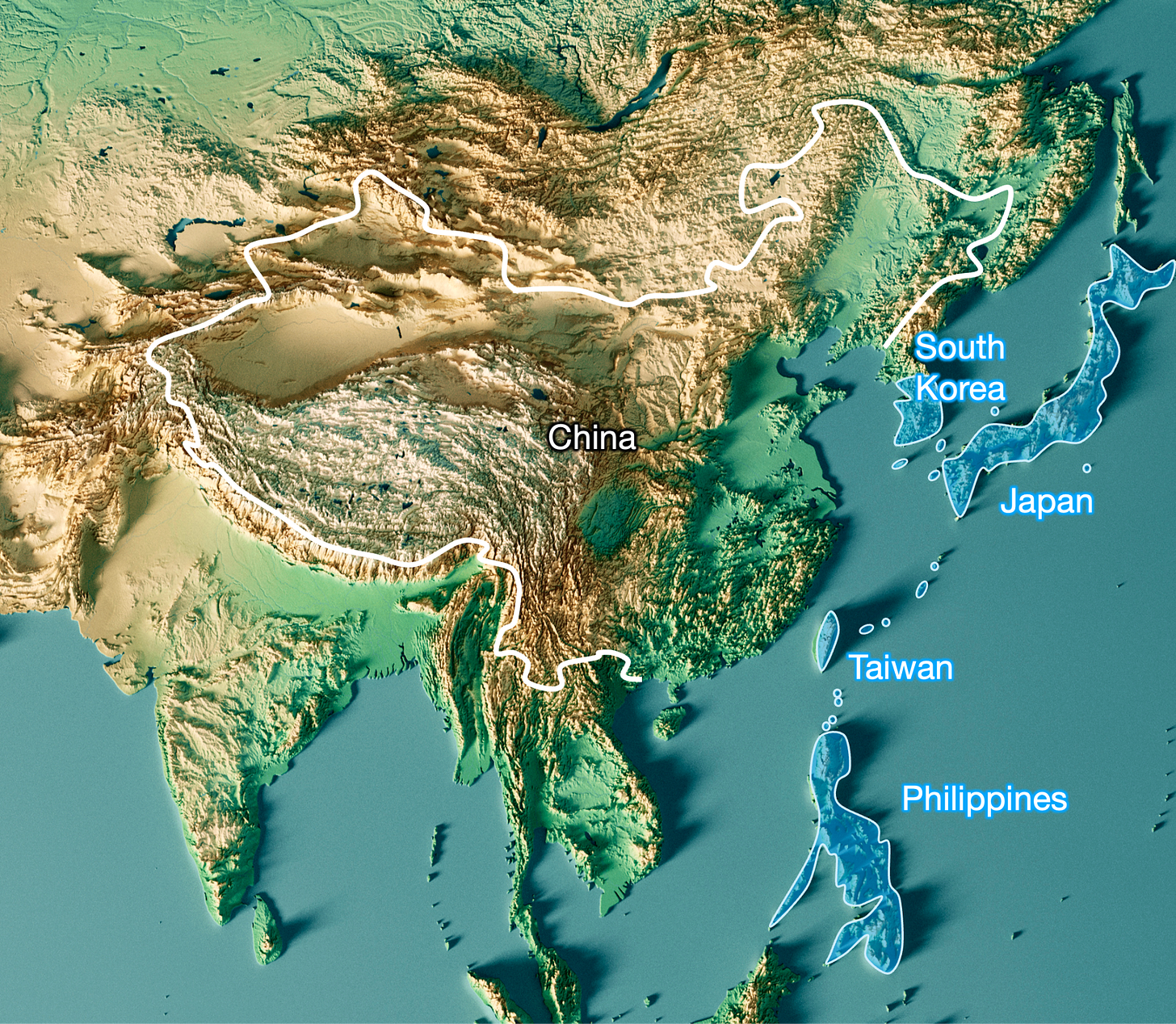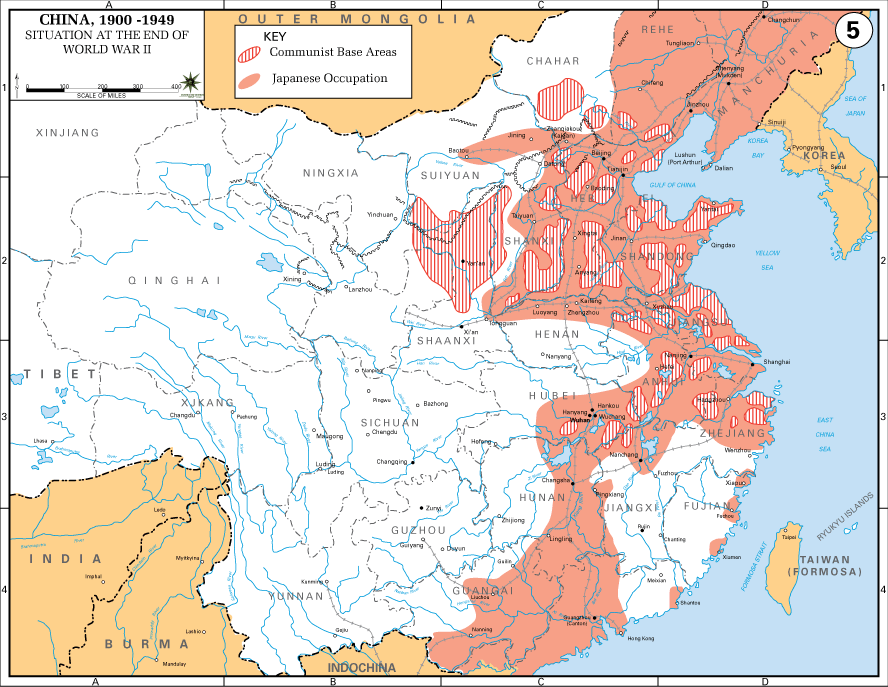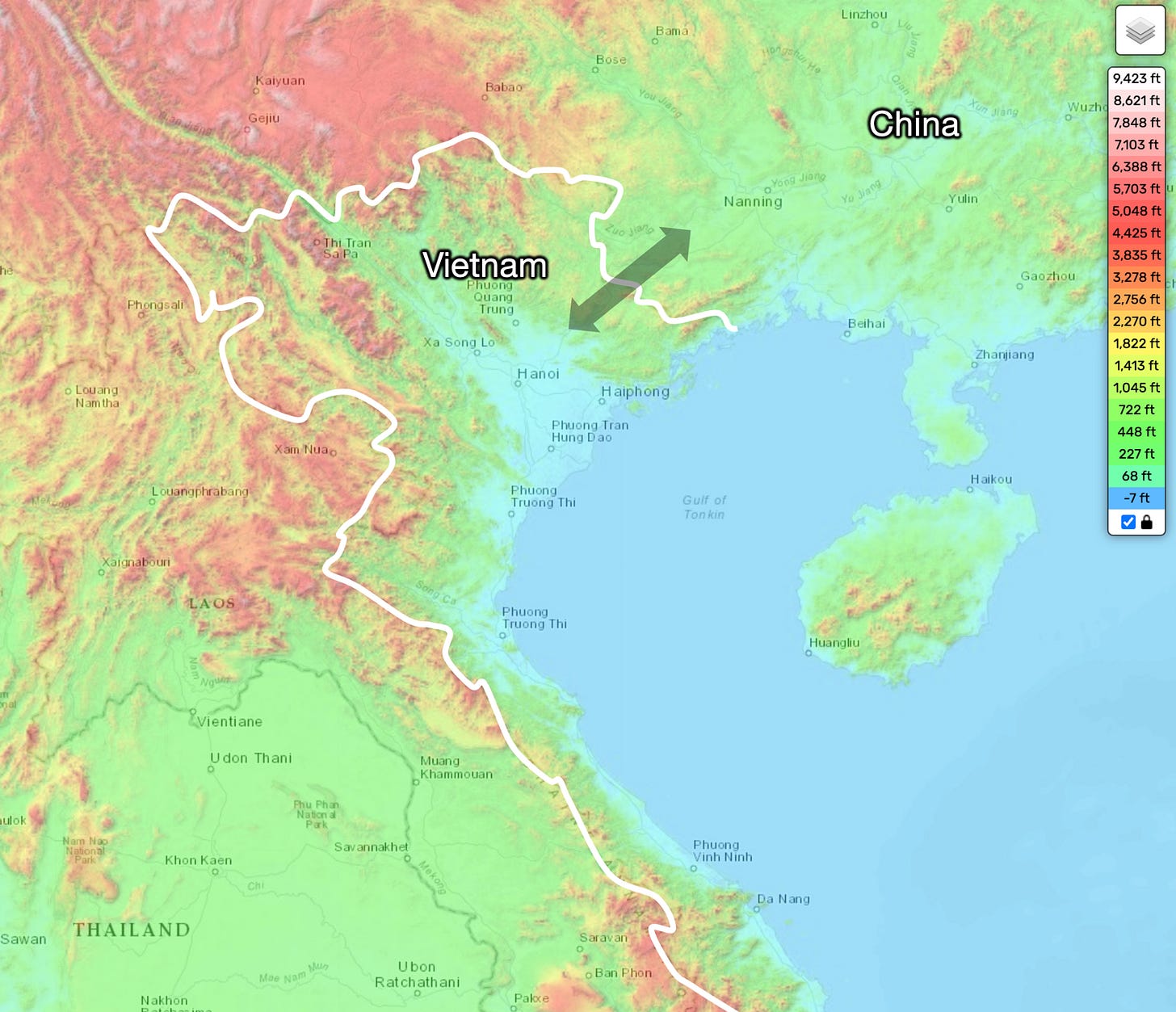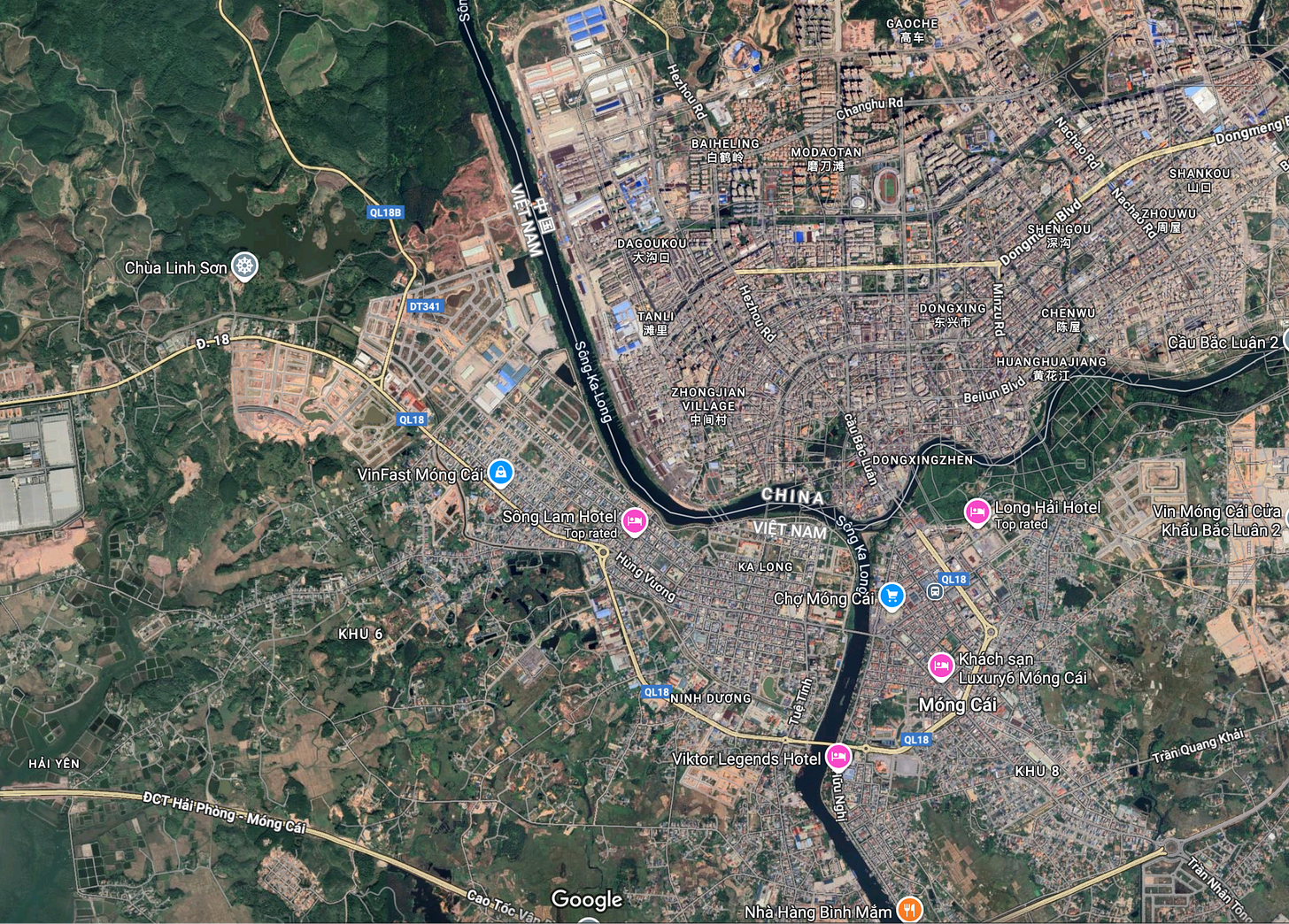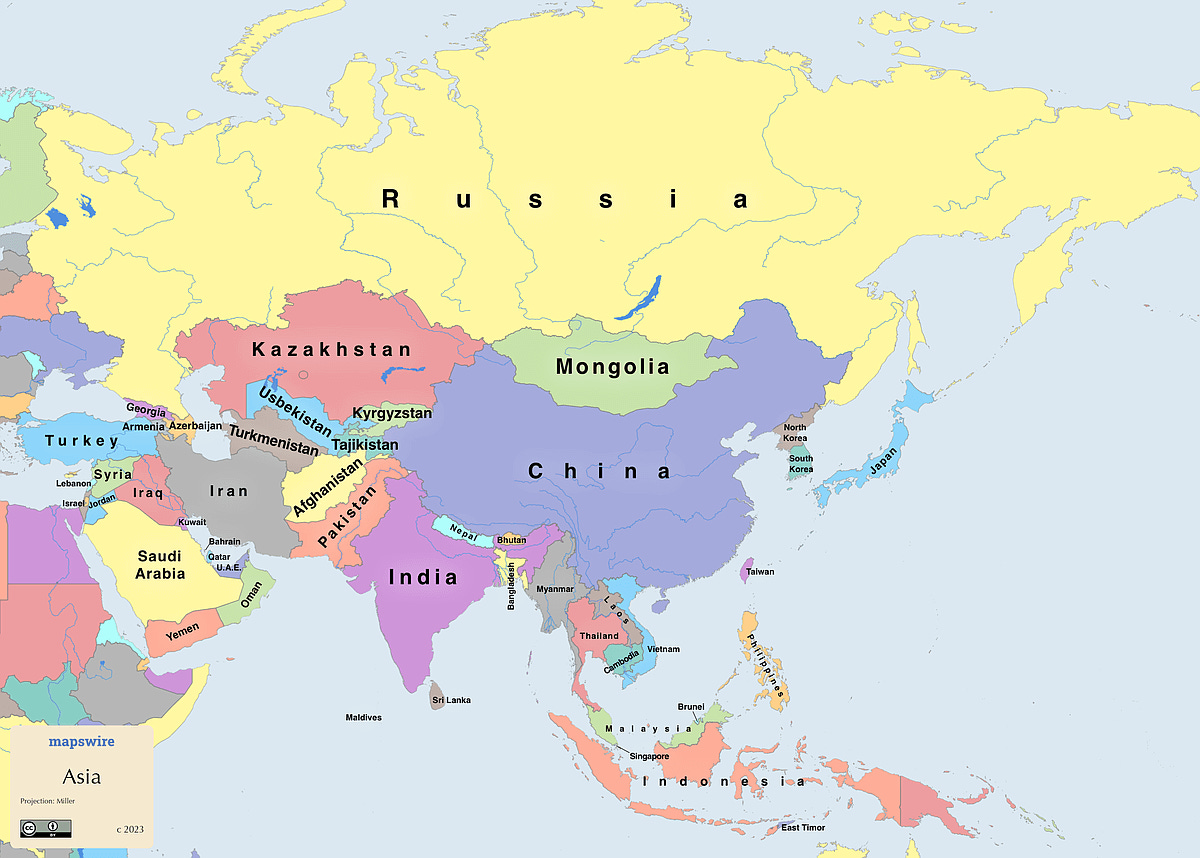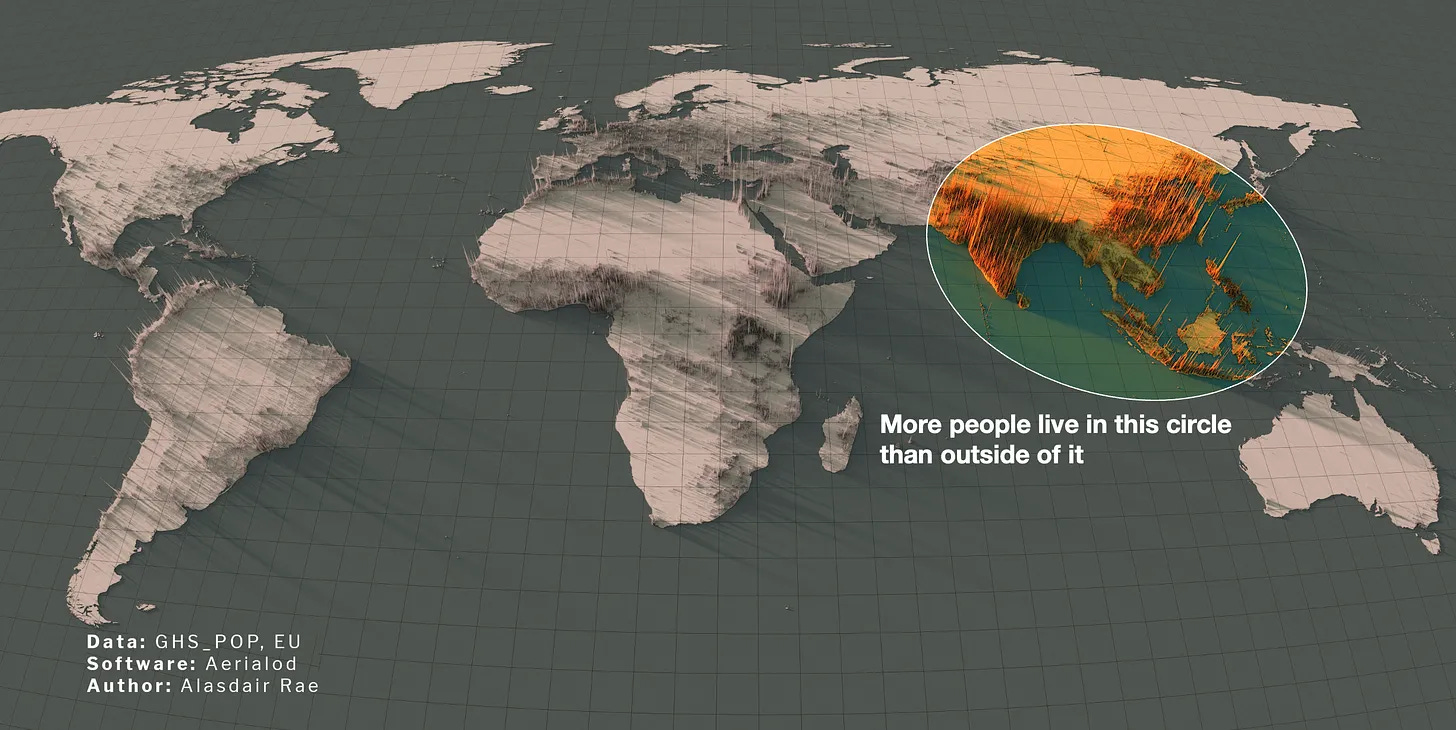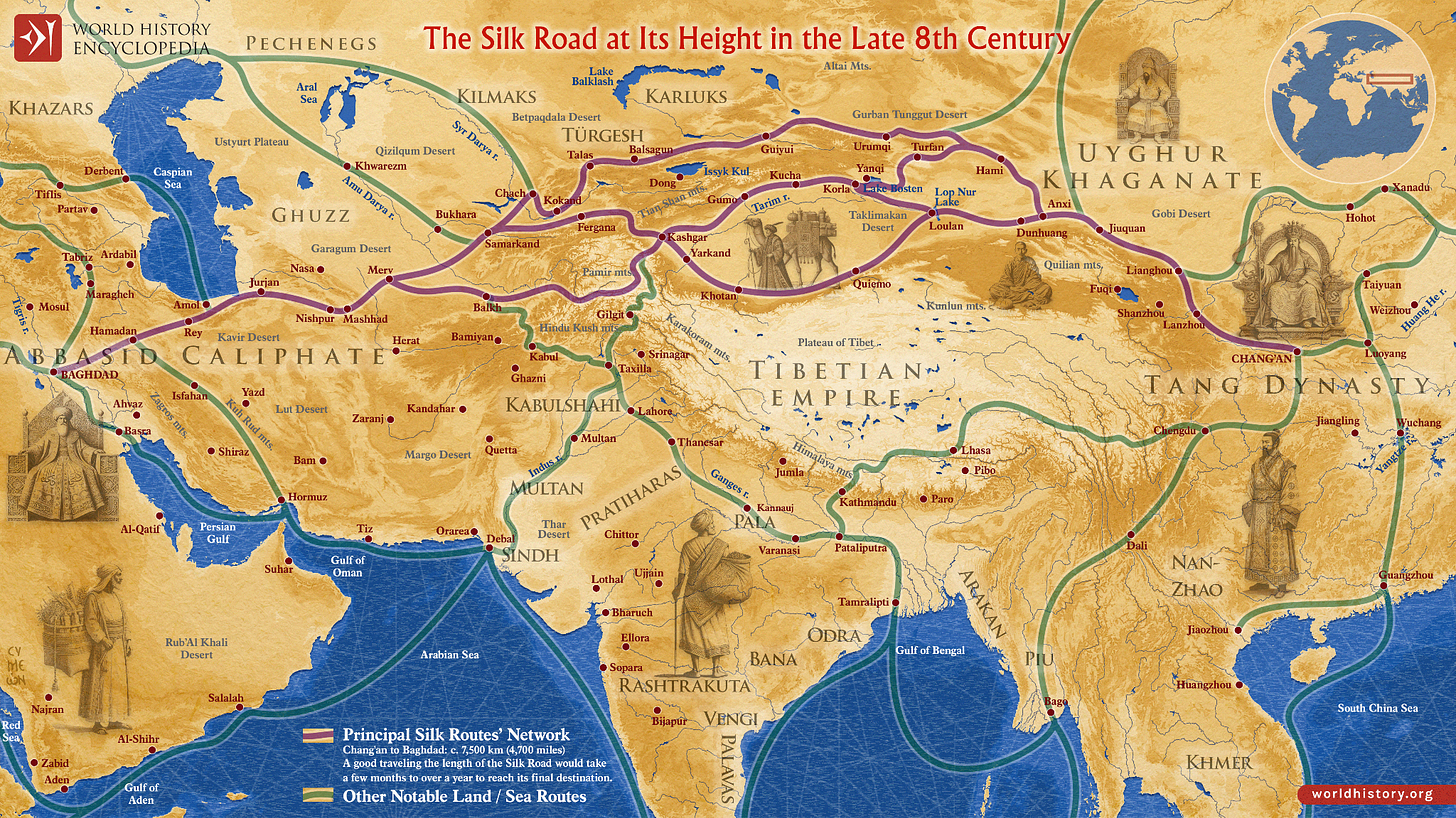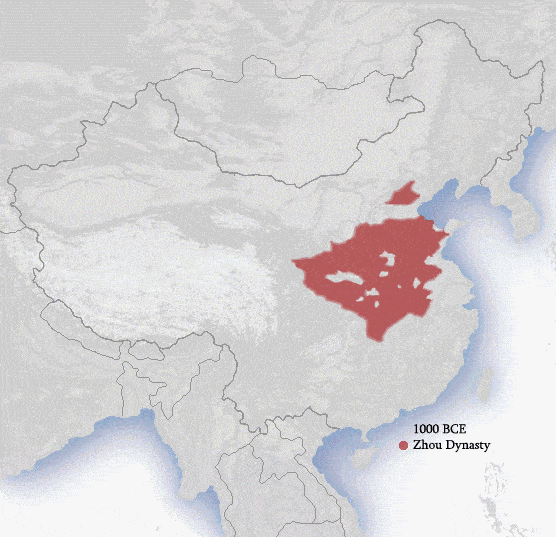China vs US: Which Geography Is Best?
We covered why the US’s geography is so overpowered in the previous article. How does it compare to China?
Both have a continent-scale country surrounded by oceans and mountains, with a massive heartland plain, criss-crossed by rivers that make it highly fertile. But when you get into the details, the differences become stark.
1. China’s Defenses
For starters, China and the US are broadly similar in size:
Both are continent-sized superpowers.
China’s east and west are protected by the sea. The rest is protected by a series of mountains:
Most of China’s border with India is protected by Tibet, the most elevated plateau in the world, which ends in the Himalayas, the tallest mountain range in the world. Absolutely impassable. This is very much why China annexed Tibet in 1951, in a move quite similar to how the US co-opted Texas in the mid 1800s to protect against Mexico.
If that wasn’t enough, there are also the states of Nepal and Bhutan that serve as buffers between them—which India and China fight to co-opt:
The southern part, the border between China and Vietnam / Laos / Thailand / Myanmar, also has mountains, but they include another barrier: some of the densest jungle in the world.
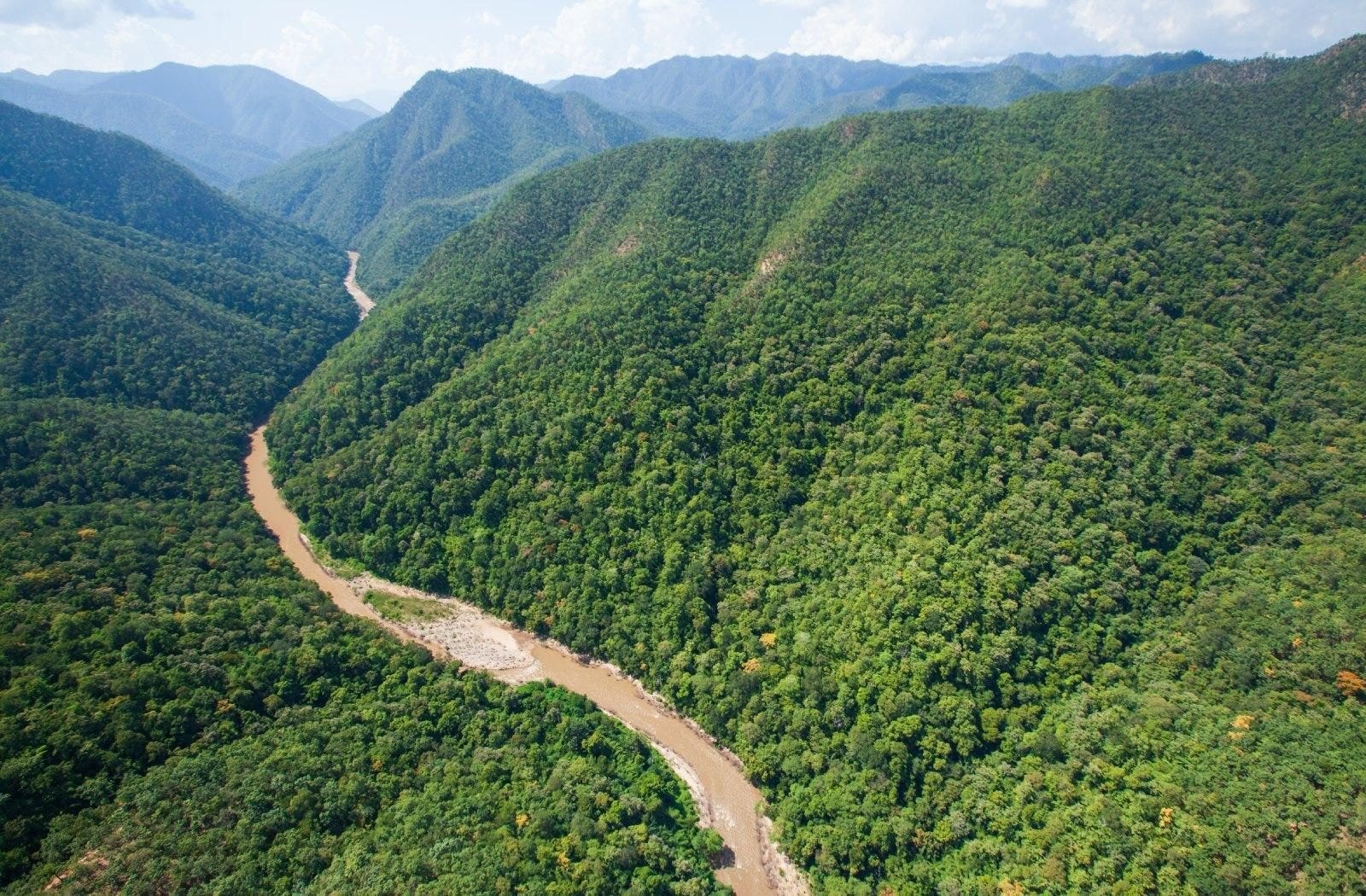
To the west, Xinjiang is big, mountainous, and desertic.
This is what it looks like:
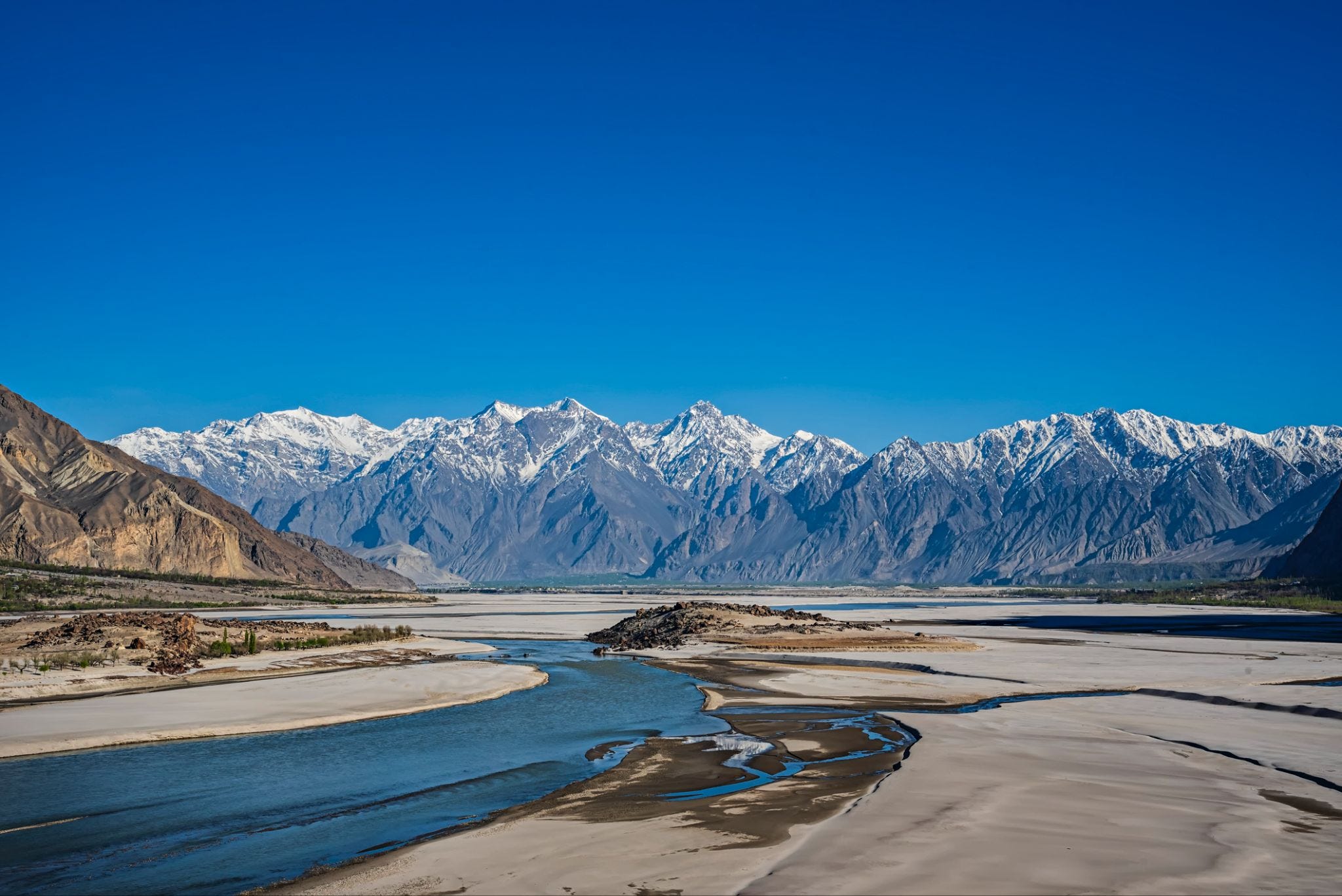
To its north, it has lower mountains but also steppes that are sparsely populated. Farther north, the even less populated Siberia:
To give you orders of magnitude, Mongolia has just 3.5M people, to China’s ~1,400M.
As we discussed in Putin’s Mindset on Russia, if anyone is going to do some invading here, it’s China in Siberia, not the other way around.
Finally, the only land border it has to its east is with North Korea, a vassal state.
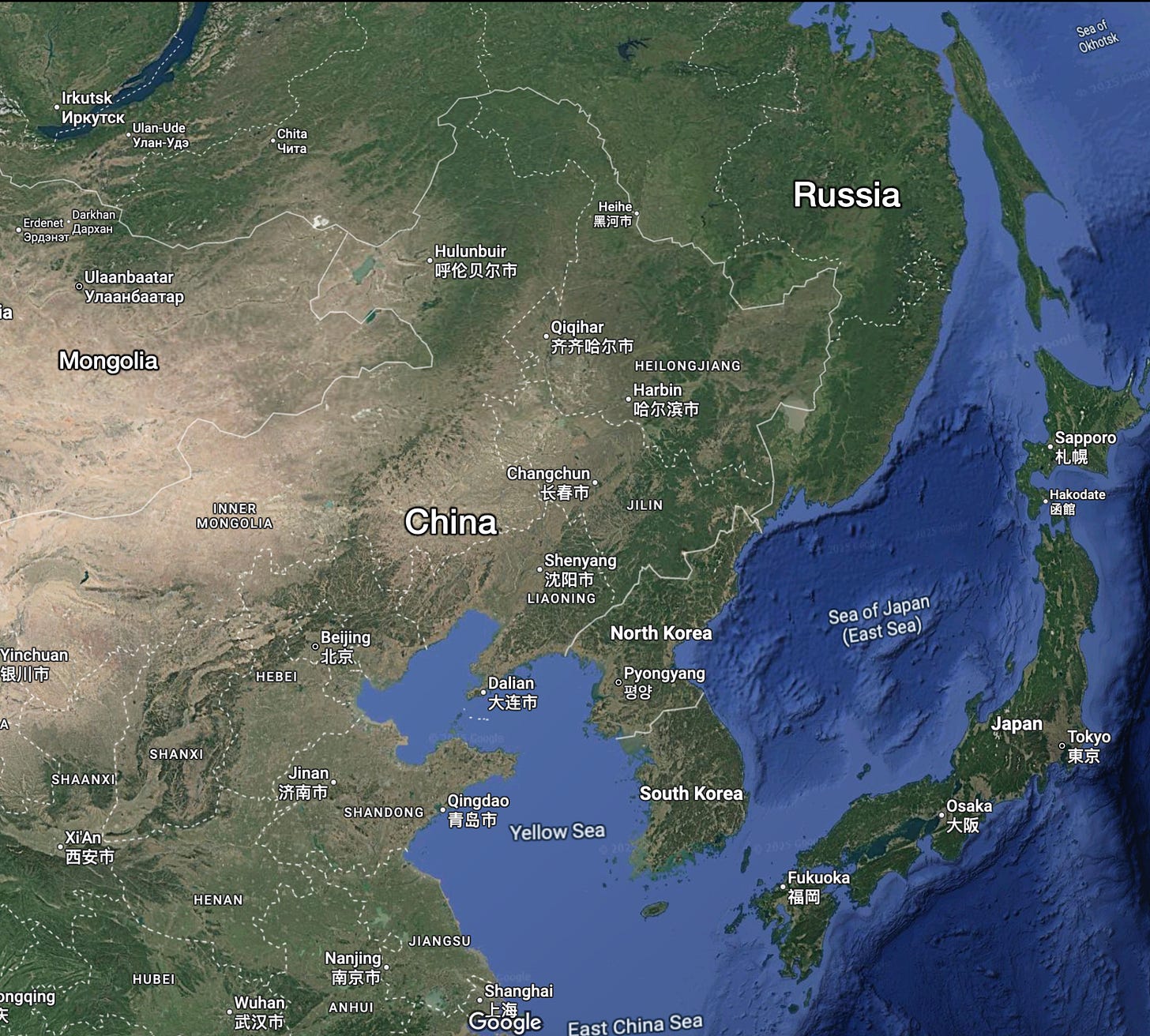
You can see the parallels with the US:
Continent-sized
Seas, mountains, and deserts protecting its borders
In addition, it has buffer states to protect it (Bhutan, Nepal, Mongolia, North Korea, and in Central Asia it has influence over the Central Asian republics).
But when you get into the details, you can see how much flimsier China’s protections are compared to the US’s.
2. The Holes in China’s Defense
There are many, starting with the seas.
Seaborne Threats
China’s coast is so littered with enemies aligned with the US that we can call them a sea barrier. China can’t actually access the Pacific Ocean without passing one of these barriers. If the US really wanted, it could choke China’s passage here.
And this is not theoretical: Western powers arrived in China from the sea in the 1800s and triggered the Opium Wars:
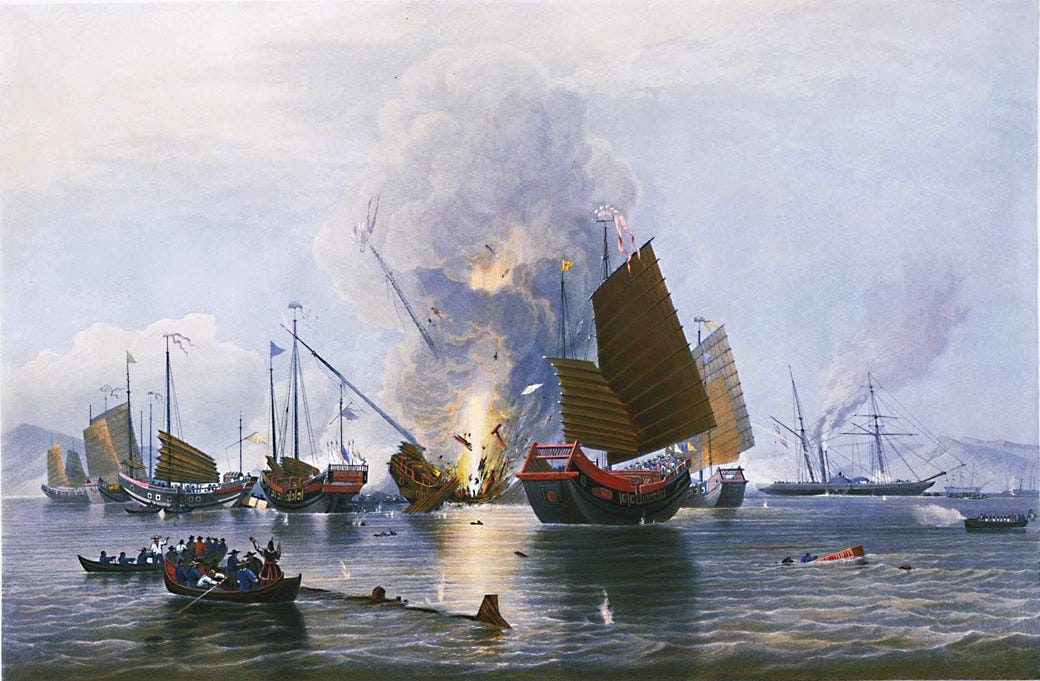
They subdued China, kick-starting its century of humiliation.
Japan followed Western Powers, and conquered a huge chunk of China:
Later, the US supported South Korea’s independence from North Korea through naval operations.1
All of this to say: China might have a big coast, but it’s nothing like the US’s Pacific and Atlantic Coasts, which are completely safe from seaborne threats.
Southern Threat
To its south, Vietnam is somewhat comparable to Mexico. Their populations are 100M and 130M respectively, and most of the border is impassable. But unlike the Mexico–US border, the Vietnam–China border has a huge opening.
Northern Vietnam is basically the Red River Basin. That basin has an opening to China that is only a few hundred feet / meters high. That border has jungle, but it’s reasonably well populated and built out too, making logistics quite easy.
This is why China has invaded Vietnam maybe a dozen times2 in its history, the last one just 50 years ago. If invasions go in one direction, they generally can go in the other. And yet Vietnam has proven it can’t be easily conquered. It could not invade China, but it could definitely hurt it if an international armed conflict emerged in the region.
If you go to the west, of course there’s India, the most populated country in the world. Thankfully for both countries, they’re protected from each other by the Himalayas and Tibet, but still, this proximity of two behemoths is not a very stable situation.
If it were only India, maybe it could be manageable. But China is the country with the most neighbors!3 And most of them are on the western border: Vietnam, Laos, Burma, India, Bhutan, Nepal, Pakistan, Afghanistan, Tajikistan, Kyrgyzstan, and Kazakhstan.
China’s enemies only need to co-opt a few of these Chinese neighbors to make China nervous. The result is that China needs to constantly manage a host of them to make sure they don’t turn against it. And of course, this is not easy work since this is the most populated region in the world.
Continuing our clockwise trip, the western parts of China might have deserts and mountains, but the Silk Road was still able to cross this region.
There are several passes that allow for people (and hence the military) to cross this.
China knows this, and it’s why it has continuously expanded westward, to create as big a buffer as it can. This is why it has worked so hard in history to conquer this region:
It’s also why it has recently worked to sinicize Xinjiang. The buffer in this region is now large enough to protect China, but not because it’s impassable; because it’s big.
And then there’s the north. It is not a huge threat today, but the existence of the Great Wall of China illustrates how this was no pacific region in the past.
On the map:

Mongols attacked China hundreds of times, with maybe a dozen real invasions, half of which were successful! These include Genghis Khan’s invasion, and the Manchurian one, which deposed the Ming and became the last Chinese Dynasty, the Qing. Mongolia doesn’t have the power to do this anymore, but Russia is another matter.
All this shows that, unlike the US, China is in a much more precarious position defensively speaking.
3. China’s Productive Heartland
Like the US, China has a very productive heartland.


